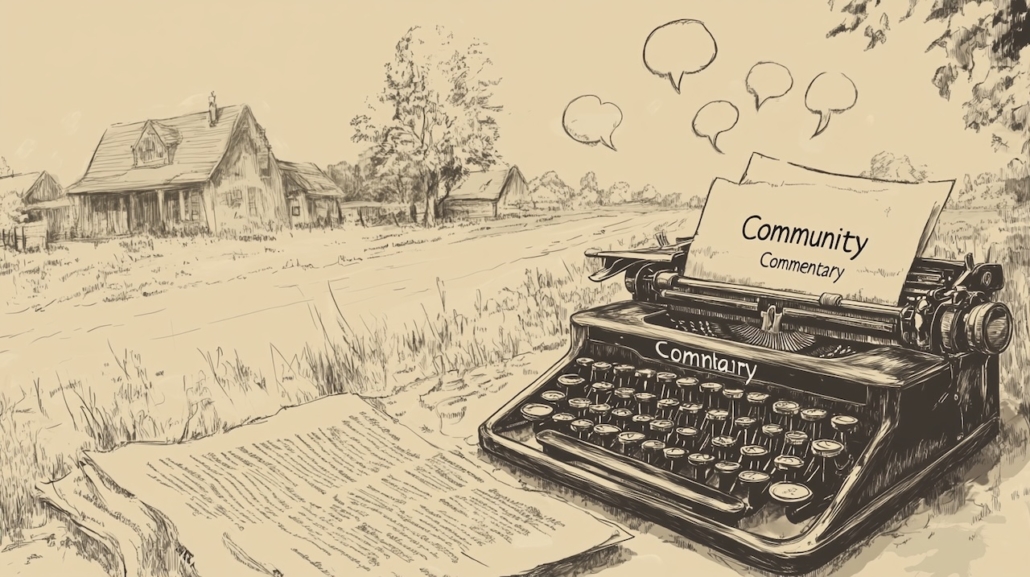OPINIONS: Reduce Maine’s carbon footprint by restoring rails
 by John D. Koons
by John D. Koons
Let’s restore the existing rail right-of-way from Brunswick to Bangor and power rail service with now-available battery or hydrogen-fueled equipment.
Rail advocacy groups such as Trainridersne.org and Mainerailgroup.org have soldiered on for years largely out of the public eye with the hope of restoring efficient rail service on existing rail right of ways. Now is the time to take action.
Vehicular traffic is Maine’s single largest producer of greenhouse gases, accounting for 35-40 percent of its carbon footprint. Maine transportation has been stuck on cars and trucks for far too long. Two years ago, Maine Department of Transportation spent about 86 cents per person on public transit. The national average was about $5 per person—Vermont about $12 per person. Maine lags woefully behind in development of its public transit.
Restoring passenger rail service, i.e., moving potentially millions of bodies in the course of a year between Maine’s cities and towns would help shrink Maine’s carbon footprint to a pawprint. Expanding broadband together with passenger rail service would be an economic juggernaut.
Imagine rail service that connects Brunswick to Bangor and the cities and towns in between. The Opera House and Lockwood Hotel, in Waterville, Reny’s, in Gardiner, Cushnoc, in Augusta, Liberal Cup, in Hallowell, a beautiful and safe snowy ride along the mighty Kennebec River, visits with friends and family members, and hundreds more possibilities suddenly open up for people of all ages. People with disabilities, the elderly, and those who don’t drive could get around without a car.
College students from Bowdoin to Colby to University of Maine and more would be connected by rail.
Maine is often described as being one small town. With rail service, it truly would return to being as connected and accessible as it was over a half century ago.
Nearly every city and town along this rail corridor has been trying to revitalize their downtowns for years. The overlooked common denominator in their midst is the dormant, deteriorating rail line that could be revitalized using very green battery or hydrogen propulsion.
There is strength in numbers of communities linked by this wasted asset and it is way past time to use this existing infrastructure as designed for the common transportation good. Rail naturally links cities and towns together, which have existing infrastructure to handle it.
Travel and tourism would increase in-state and attract many more out-of-staters to inland destinations.
The state recently acquired the dormant Madison rail line. This is tremendous news for trail enthusiasts and would provide a substantial economic boost to central Maine. Trails add value to communities as has been demonstrated by individuals and organizations around the state. I’m one of them, having spearheaded the development of Quarry Road Trails, in Waterville, over a decade ago.
I agree with Mr. Jeremy Cluchey, of Merrymeeting Trails and the Maine Trails Coalition, who asserts in his letter (August 28, 2021, Kennebec Journal/Morning Sentinel) that “these corridors are languishing public assets, and it’s time to use them for the highest community benefit.” We disagree on the use. Not all unused rail corridors should be converted to trails.
Yes, pursue a trail for the Madison line, but in the case of the Brunswick/Augusta line, rebuild this as a modern train or tram line as originally designed with adjacent trail access where practical. Trails, while enhancing value in communities, serve one small slice of the population pie, while rail serves the entire population 365 days a year. Rail is at least an order of magnitude greater in economic multiplier effect. The question is how to do it reasonably and serve Maine’s markets to their fullest potential. There are answers.
The Maine Legislature authorized a study of rail service along the Portland-Bangor corridor (LD227), with a report due in 2023. This is essential but slow to happen. Why wait? Much can be extrapolated from a several-year-old Lewiston study.
Maine DOT has its hands full dealing with such a huge state full of deteriorating highways. It’s unlikely to wave the banner for rail as Governor Mills focuses on electric cars as a solution. We need more options. Fossil fuels enabled us to get to where we are and we are thankful for that, but we’ve obviously over done it. It is now our responsibility to go back to the future with battery – and hydrogen-powered passenger rail service.
Talk to your state and local representatives. Let’s make this happen for our economy, our towns, our people, and our planet.
Responsible journalism is hard work!
It is also expensive!
If you enjoy reading The Town Line and the good news we bring you each week, would you consider a donation to help us continue the work we’re doing?
The Town Line is a 501(c)(3) nonprofit private foundation, and all donations are tax deductible under the Internal Revenue Service code.
To help, please visit our online donation page or mail a check payable to The Town Line, PO Box 89, South China, ME 04358. Your contribution is appreciated!





I was on the committee that generated the “Lewiston Rail Study” referenced in Mr. Koons submission above. Nationally recognized engineering consultants estimated costs to implement passenger rail service from Portland to Lewiston at $250,000,000 plus (pre the latest round of massive inflation in construction costs) and $15,000,000 to $20,000,000 in annual operations and maintenance costs. Ridership projections were anemic at best, with little growth expected in Lewiston for the next 20 years. In short, the passenger rail extension to Lewiston would require massive subsidies from federal, state of Maine and local government. Maine, like most of the United State outside of metro New York, does not have the population density to support passenger rail without significant subsidies. I can only imagine the subsidies required to support rail from Brunswick to Bangor. It makes no economic sense, given the requirement for the MDOT to support the 8,000 + miles under its care as well as the miles of pavement under the care of local government entities. Passenger train sets are best left to museums, if the rail fans want to see them, up close and personal.
“Let’s restore the existing rail right-of-way from Brunswick to Bangor and power rail service with now-available battery or hydrogen-fueled equipment.”
As an opening statement, that gives away the author’s lack of authoritative knowledge on the subject of such matters.
Fuel cells (“hydrogen fueled”) have been a dream for more than 20 years, and have failed to deliver. Battery powered rail service? Are you kidding me? How many Tesla equivalents would a passenger train be equivalent to? And what capacity recharge service would be required? And how many days would it take? And how much hydrocarbon fuel to generate that electricity?
Stop looking at Mechanics Illustrated as your source of technical data.
Years ago (before 1950) passenger trains in Maine were supplemented locally by trolleys or buses. Initially, (in the early 1900s) Maine had a significant public transport system of interurban trolley lines, narrow gauge railroads and the large rail lines. Now? Cars. A few intercity buses and some scattered public transit systems are what we have. If one live rurally without a car, they are left begging. Before we invest some significant dollars in rail, we need to get some local transit systems together that can serve both rural and underserved towns and cities. There are no beds in railroad stations, something needs to exist to move folks from the station to their destination(s). Keeping the cart behind the horse is tough today, many competing ideas and infrastructure costs fill our plates while our coffers lack the capacity to carry out the mission. In fact, I’m not sure that expensive individually owned electric cars are the answer; the future is filled with questions about the longevity and disposal of EVs.